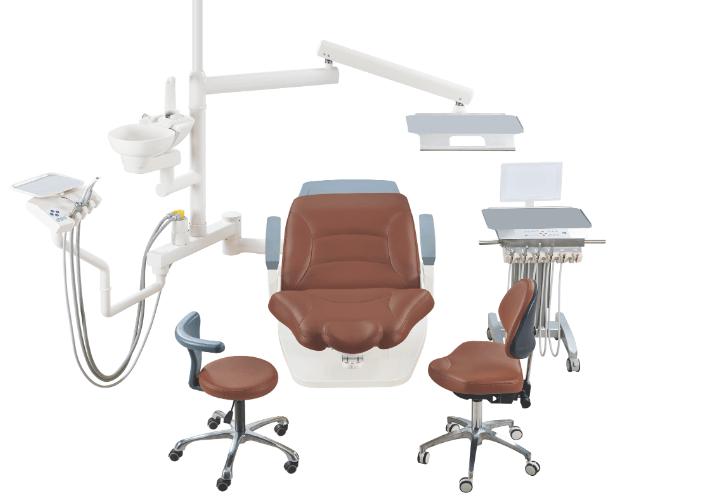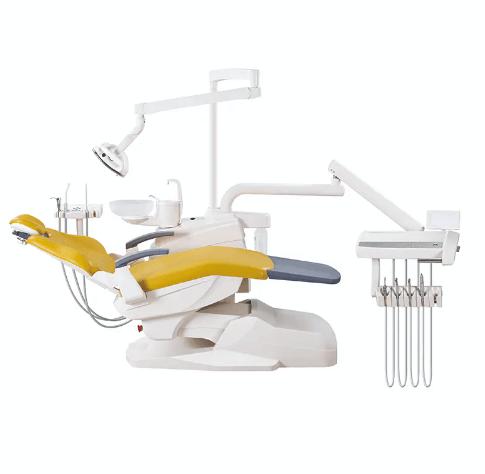Как правильно обслуживать стоматологическое оборудование
Как стоматолог, ваше оборудование — это ваш источник дохода. Без него вы не смогли бы предоставлять услуги, на которые полагаются ваши пациенты в вопросах здоровья полости рта. Однако стоматологическое оборудование может быть дорогим, а его замена может быть серьезной статьей расходов. Вот почему важно правильно обслуживать ваше оборудование, чтобы оно прослужило как можно дольше и продолжало предоставлять надежные и безопасные услуги вашим пациентам.
В этой статье мы дадим вам советы о том, как правильно обслуживать стоматологическое оборудование, включая создание графика обслуживания, регулярные процедуры очистки, смазку и калибровку, осмотр и устранение неполадок, а также ведение записей о техническом обслуживании. Соблюдение этих советов поможет вам максимально эффективно использовать свое оборудование и минимизировать время простоя и дорогостоящий ремонт.
В этой статье мы дадим вам советы о том, как правильно обслуживать стоматологическое оборудование, включая создание графика обслуживания, регулярные процедуры очистки, смазку и калибровку, осмотр и устранение неполадок, а также ведение записей о техническом обслуживании. Соблюдение этих советов поможет вам максимально эффективно использовать свое оборудование и минимизировать время простоя и дорогостоящий ремонт.
Составьте график технического обслуживания
Одной из самых важных вещей, которые вы можете сделать для надлежащего обслуживания вашего стоматологического оборудования, является создание графика обслуживания. Этот график должен включать все используемое вами оборудование и указывать, как часто следует проверять, чистить, смазывать и калибровать каждую единицу оборудования.
При создании графика технического обслуживания обязательно ознакомьтесь с рекомендациями производителя для каждой единицы оборудования, а также с любыми правилами или стандартами, применимыми к вашей отрасли. Вам также следует учитывать частоту использования и требования, предъявляемые к каждой единице оборудования, при определении частоты проведения технического обслуживания.
При создании графика технического обслуживания обязательно ознакомьтесь с рекомендациями производителя для каждой единицы оборудования, а также с любыми правилами или стандартами, применимыми к вашей отрасли. Вам также следует учитывать частоту использования и требования, предъявляемые к каждой единице оборудования, при определении частоты проведения технического обслуживания.
Регулярные процедуры очистки
Регулярная очистка необходима для поддержания производительности и безопасности вашего стоматологического оборудования. Она не только помогает предотвратить накопление бактерий и других загрязняющих веществ, но и может помочь продлить срок службы вашего оборудования, предотвращая коррозию и другие виды повреждений.
Правильные процедуры очистки будут зависеть от типа оборудования, с которым вы работаете. Например, наконечники следует разбирать, чистить и стерилизовать после каждого использования, в то время как воздушные компрессоры могут нуждаться в очистке только один раз в год. Обязательно следуйте рекомендациям производителя для каждого вида оборудования и используйте только одобренные чистящие растворы и методы.
Правильные процедуры очистки будут зависеть от типа оборудования, с которым вы работаете. Например, наконечники следует разбирать, чистить и стерилизовать после каждого использования, в то время как воздушные компрессоры могут нуждаться в очистке только один раз в год. Обязательно следуйте рекомендациям производителя для каждого вида оборудования и используйте только одобренные чистящие растворы и методы.
Смазка и калибровка
Помимо регулярной чистки, смазка и калибровка также важны для поддержания вашего стоматологического оборудования. Смазка помогает предотвратить износ движущихся частей, а калибровка обеспечивает надлежащую работу оборудования и получение точных результатов.
Опять же, надлежащие процедуры смазки и калибровки будут зависеть от типа оборудования, с которым вы работаете. Некоторое оборудование может требовать смазки перед каждым использованием, в то время как другое может нуждаться в ней только один раз в месяц. Калибровку следует выполнять с регулярными интервалами, как указано в рекомендациях производителя.
Опять же, надлежащие процедуры смазки и калибровки будут зависеть от типа оборудования, с которым вы работаете. Некоторое оборудование может требовать смазки перед каждым использованием, в то время как другое может нуждаться в ней только один раз в месяц. Калибровку следует выполнять с регулярными интервалами, как указано в рекомендациях производителя.
Проверка и устранение неисправностей
Регулярный осмотр и устранение неисправностей также важны для обнаружения и решения проблем до того, как они станут более серьезными проблемами. Это включает проверку на наличие признаков износа, а также поиск любых необычных шумов или других признаков неисправности.
Если вы заметили какие-либо проблемы с вашим оборудованием, важно решить их как можно скорее. Это может включать замену изношенных или поврежденных деталей или выполнение более масштабного ремонта.
Если вы заметили какие-либо проблемы с вашим оборудованием, важно решить их как можно скорее. Это может включать замену изношенных или поврежденных деталей или выполнение более масштабного ремонта.
Ведение записей по техническому обслуживанию
Наконец, важно вести точные записи всех работ по техническому обслуживанию вашего стоматологического оборудования. Это включает в себя запись даты и типа выполненного обслуживания, а также любых выполненных ремонтов или замен.
Ведение точных записей о техническом обслуживании может помочь вам отслеживать срок службы вашего оборудования, а также гарантировать, что вы соответствуете всем гарантийным или нормативным требованиям. Это также может помочь вам отслеживать расходы на техническое обслуживание и выявлять любые закономерности или проблемы, которые могут влиять на производительность вашего оборудования.
Ведение точных записей о техническом обслуживании может помочь вам отслеживать срок службы вашего оборудования, а также гарантировать, что вы соответствуете всем гарантийным или нормативным требованиям. Это также может помочь вам отслеживать расходы на техническое обслуживание и выявлять любые закономерности или проблемы, которые могут влиять на производительность вашего оборудования.
Заключительные советы и рекомендации
В дополнение к советам, которые мы уже обсудили, есть еще несколько вещей, которые вы можете сделать, чтобы максимально продлить срок службы и производительность вашего стоматологического оборудования. К ним относятся:
●Инвестирование в высококачественное оборудование, рассчитанное на длительный срок службы
● Правильное хранение оборудования, когда оно не используется.
●Обучение персонала правильному использованию и обслуживанию оборудования
● Приоритет обслуживания перед заменой, когда это возможно
Следуя этим советам и рекомендациям, вы можете помочь обеспечить хорошее состояние вашего стоматологического оборудования и его служение вашей практике долгие годы. Приоритетное обслуживание оборудования также может помочь повысить безопасность и удовлетворенность пациентов, а также минимизировать время простоя и дорогостоящий ремонт.
●Инвестирование в высококачественное оборудование, рассчитанное на длительный срок службы
● Правильное хранение оборудования, когда оно не используется.
●Обучение персонала правильному использованию и обслуживанию оборудования
● Приоритет обслуживания перед заменой, когда это возможно
Следуя этим советам и рекомендациям, вы можете помочь обеспечить хорошее состояние вашего стоматологического оборудования и его служение вашей практике долгие годы. Приоритетное обслуживание оборудования также может помочь повысить безопасность и удовлетворенность пациентов, а также минимизировать время простоя и дорогостоящий ремонт.
Заключение
В заключение, правильное обслуживание вашего стоматологического оборудования имеет решающее значение для успеха вашей практики. Создав график обслуживания, выполняя регулярные процедуры очистки, смазки и калибровки, проверки и устранения неисправностей, а также ведя записи о техническом обслуживании, вы можете помочь продлить срок службы вашего оборудования и гарантировать, что оно продолжит предоставлять надежные и безопасные услуги вашим пациентам.
Не забывайте инвестировать в высококачественное оборудование, обучать персонал правильному использованию и обслуживанию и отдавать приоритет обслуживанию, а не замене, когда это возможно. С помощью этих советов вы сможете максимально продлить срок службы и производительность вашего стоматологического оборудования и достичь наилучших результатов практики.
Не забывайте инвестировать в высококачественное оборудование, обучать персонал правильному использованию и обслуживанию и отдавать приоритет обслуживанию, а не замене, когда это возможно. С помощью этих советов вы сможете максимально продлить срок службы и производительность вашего стоматологического оборудования и достичь наилучших результатов практики.



Оставьте комментарий